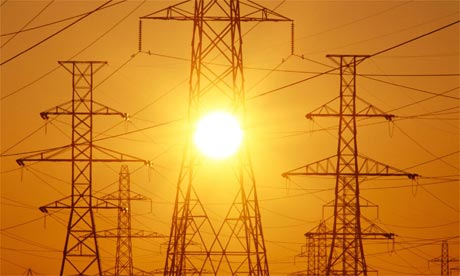Electricity consumption in Nepal triples over past eight years

Kathmandu / Aug 25: Since the end of power cuts and the resumption of regular electricity supply in the country, there has been a significant increase in electricity consumption. The energy consumption has tripled, according to the Nepal Electricity Authority (NEA).
In the fiscal year 2015/16, energy consumption was 3.72 billion units, whereas in the last fiscal year 2023/24, it reached 10.02 billion units. Over an eight-year period, domestic electricity consumption has increased by 6.51 billion units. Eight years ago, the rate of increase in electricity consumption was negative.
In the last fiscal year, the highest electricity consumption was from residential customers, with 4.31 billion units, followed by industrial customers with 3.69 billion units. The remaining electricity was consumed by other customer groups. Eight years ago, per capita energy consumption was 131 units, which has now increased to 400 units.
Eight years ago, even during the monsoon season, there were daily power cuts of up to eight hours. In winter, projections suggested that power cuts could extend to 14 hours a day. Starting from mid-October 2016, power cuts were gradually eliminated for residential customers in major cities across the country, including the Kathmandu Valley, and later for industrial customers as well. The government declared the entire country free of power cuts from mid-April 2018.
Eight years ago, electricity reached only 58 percent of households. Now, it reaches 99 percent. Of the households with electricity access, 97 percent use the national grid, while 2 percent rely on off-grid sources such as small hydro and solar energy. Eight years ago, there were around 3 million electricity customers, whereas today the number has risen to 59, 35,000, including community connections.
Managing Director (MD) Kulman Ghising of the NEA stated that since the end of power cuts and the subsequent provision of continuous electricity supply, electricity consumption has increased. “Both large and small industries are receiving uninterrupted power supply. During this period, many industrial load approvals have been granted. There has been increased use of electrical appliances for domestic purposes such as cooking, and the use of electric vehicles in private and public transportation has risen. Extensive electrification has been carried out, leading to an increase in internal electricity consumption,” he said.
With the increasing demand for electricity each year, the challenges in electricity supply have also grown. To address these challenges and provide reliable, quality, and safe electricity to consumers, the major cities of the country have been divided into 11 clusters. Additionally, a master plan for transmission and distribution infrastructure capable of meeting the demand until 2050 has been developed and is being gradually implemented.
MD Ghising said that efforts are underway to increase domestic electricity consumption, boost production to reduce imports, and enhance exports. In fiscal year 2015/16, electricity consumption was 37.2 billion units. In fiscal year 2016/17, it increased by 92.47 percent to 47.7 billion units. Consumption further rose to 55.6 billion units in fiscal year 2017/18, 63 billion units in 2018/19, 64.2 billion units in 2019/20, and 72.8 billion units in 2020/21.
Similarly, in fiscal year 2021/22, electricity consumption was 84.4 billion units; in fiscal year 2022/23, it was 93.5 billion units; and in fiscal year 2023/24, it reached 102 billion units. Compared to fiscal year 2022/23, electricity consumption in fiscal year 2023/24 increased by about 10 percent.
In the previous fiscal year, peak demand (the time of highest electricity demand) increased by 11.34 percent compared to the previous fiscal year 2022/23. On May 29 of the last fiscal year, the highest electricity demand ever recorded in the country was 2,212 megawatts.
During the monsoon season, there is a possibility of exporting electricity to India for six months. However, in winter, as hydropower production from river-flow projects decreases, there will be a need to import electricity to meet domestic demand for a few months. Despite this, the proportion of imported energy in the system has been decreasing. Last fiscal year, the share of imported energy in the system was 14.68 percent, which is a reduction of 8.57 percentage points compared to the previous fiscal year. Meanwhile, electricity exports have increased by 44 percent.
In the last fiscal year, 190 million units of electricity, equivalent to Rs 16.93 billion, were imported from India. During the same period, 195 million units of electricity were exported to India, generating revenue of Rs 17.06 billion. Nepal became a net exporter of electricity, earning Rs 130 million more from exports than it spent on imports.
